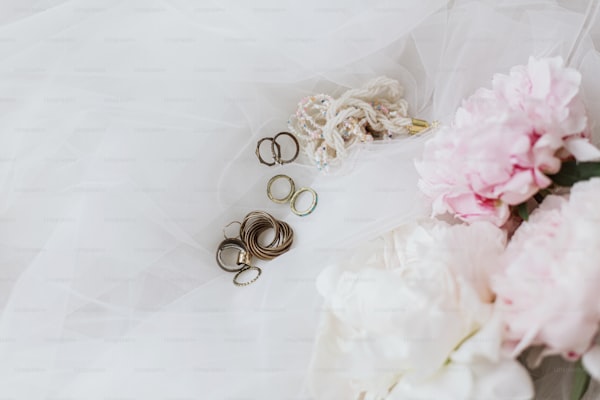Mastering the Art of Wedding Dress Production: Elegant Trains and Intricate Embroidery
Mastering the Art of Wedding Dress Production: Elegant Trains and Intricate Embroidery
Introduction to Wedding Dress Production
Creating the perfect wedding dress is a blend of artistry, precision, and passion. One of the most sought-after designs among brides is the wedding dress with a stunning elegant train and intricate embroidery. This style not only enhances the beauty of the dress but also adds depth and uniqueness to the overall bridal look. In this article, we will explore how to manage the production of such Wedding dresses, focusing on the materials, techniques, and considerations essential in bringing a bride’s dream ensemble to life.
Understanding the Elements of a Wedding Dress
Before diving into the production management, it’s crucial to understand the main components that contribute to the beauty of a wedding dress. Two of the most significant elements are:
- Elegant Train: The train is the fabric that extends from the back of the dress, creating a dramatic effect.
- Intricate Embroidery: This includes detailed stitching and designs that embellish the dress and make it unique.
Planning the Production Process
Successfully managing the production of a wedding dress involves meticulous planning. This includes the following steps:
1. Design Conceptualization
The process starts with understanding the bride’s vision. Sketching various designs, considering different styles of trains, and discussing the type of embroidery that resonates with the bride’s age and theme are essential. You may want to  for ideas.
for ideas.
2. Selecting Quality Materials
The choice of fabric plays a pivotal role in the overall impact of the dress. Common fabrics used for Wedding dresses include:
| Fabric Type | Properties |
| Satin | Luxurious and smooth, great for elegant silhouettes. |
| Chiffon | Lightweight and flowing, ideal for romantic styles. |
| Tulle | Stiff and airy, often used for voluminous skirts and trains. |
| Lace | Delicate and intricate, enhances elegance and sophistication. |
Choosing the right material also requires consideration of the dress's structure and added elements. The fabric itself can contribute to the train's flow and the embroidery's visibility.
3. Finalizing Embroidery Designs
Embroidery adds a personal touch to the wedding dress. Various embroidery techniques can be employed, such as:
- Appliqué: This method involves sewing one piece of fabric onto another, which can create beautiful layered designs.
- Beading: Adding beads can enhance the dress's glamour, particularly around necklines and trains.
- Machine Embroidery: For intricate patterns, machine embroidery can save time without compromising quality.
4. Creating a Production Timeline
Establishing a timeline is critical. Preparing a timeline that includes fittings, fabric sourcing, and embroidery can help manage expectations. A common timeline might look like the following:
| Stage | Timeframe |
| Initial Consultation | 1 month before |
| Design Finalization | 3 weeks before |
| Fabric Sourcing | 2 weeks before |
| Embroidery Design Approval | 1 week before |
| Final Fitting | 3 days before |
| Delivery | 1 day before |
Managing Production Challenges
During the production process, challenges may arise, from delays in fabric delivery to issues with embroidery designs. Here are some tips to manage these challenges effectively:
1. Maintain Open Communication
Regular updates with the bride and suppliers help in recognizing potential issues before they escalate. Utilize project management tools to keep everyone in the loop.
2. Be Flexible with Designs
Sometimes, the envisioned design may not materialize due to material constraints. Being open to alternative designs can lead to equally if not more beautiful outcomes.
3. Contingency Planning
Always have backup plans, such as alternative suppliers or fabric choices, in case the original ones fall through.
Bringing the Dress to Life
The final stages of production involve the assembly of the dress, careful attention to fits, and the application of the embroidery. Every stitch counts, so taking the time to ensure quality during these stages is essential. For a grand reveal, consider the following:
- Dress Fitting: Multiple fittings allow adjustments to be made until the dress is perfect.
- Final Touches: Check for loose threads, ensure embroidery is secure, and inspect the train for evenness.
Conclusion: The Perfect Wedding Dress
Success in managing the production of a wedding dress with an elegant train and intricate embroidery lies in meticulous planning, quality materials, and effective communication. Remember, this dress is not just a garment; it’s an heirloom filled with memories and emotions. As you embark on this creative journey, keep in mind that every bride deserves the wedding dress of her dreams. Be patient and dedicated, and your efforts will certainly pay off in a stunning final product that dazzles onlookers and leaves lasting impressions on the special day.
For additional tips, keep considering related topics such as:
- What are the latest trends in wedding dress designs?
- How to choose the right fabric for a wedding dress?
- Common mistakes to avoid when designing a wedding dress.
In mastering the art of wedding dress production, you create not just a dress, but a cherished memory that will last a lifetime.
